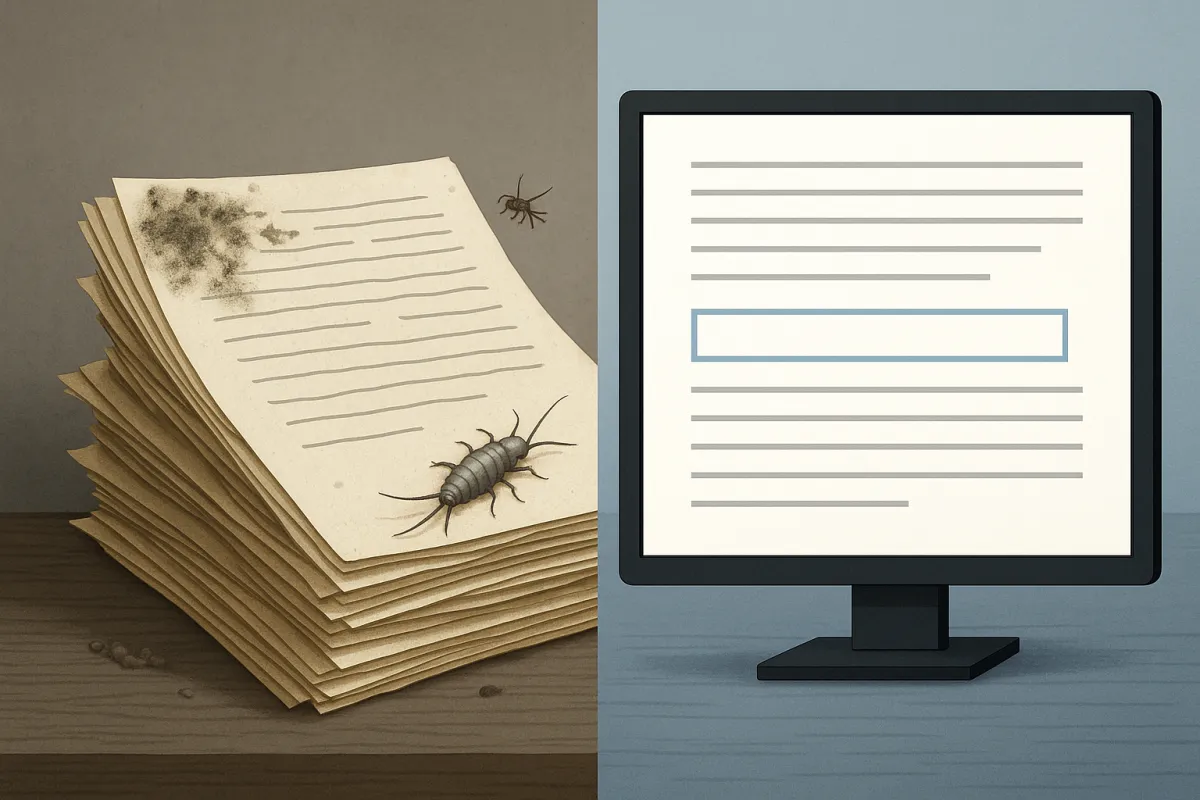
Invisible Threat: Mold, Silverfish, and the Slow Decay of Paper
By: USA IMAGING, Inc.
When businesses think about risks to their records, they usually picture fire, flood, or theft. But the greater threat often isn’t dramatic—it’s silent, slow, and hidden. Paper, left unchecked in cabinets, basements, and storage units, falls victim to mold, pests, and natural decay.
The danger? You may not realize your records are deteriorating until it’s too late.
Mold: The Silent Invader
Paper is organic, and when stored in damp or humid conditions, it becomes the perfect breeding ground for mold. Once mold takes hold:
Spreading is rapid – Entire boxes can be contaminated within weeks.
Health risks arise – Mold spores can cause respiratory problems and workplace safety issues.
Legibility is lost – Ink fades, pages stain, and documents become unreadable.
Even worse, cleaning moldy paper is often impossible without destroying the record.
Silverfish and Insects: Tiny but Destructive
Silverfish, booklice, and termites thrive in dark storage spaces. These pests feed on the starches and glue used in paper, book bindings, and even the adhesives of sticky notes. Over time, they:
Eat holes through records – Turning once-legible documents into patchy fragments.
Compromise binding and folders – Making file systems collapse.
Spread undetected – One box can quickly lead to an infestation across storage rooms.
Unlike theft, you won’t notice the damage until the paper is literally missing.
Natural Decay: The Clock Is Always Ticking
Even without mold or pests, paper degrades naturally over time. Factors include:
Acidic paper – Common in 20th-century files, leading to yellowing and brittleness.
Temperature fluctuations – Expanding and contracting fibers cause cracking.
Ink fading – Critical details vanish after years in poor storage.
The result? Historical records, contracts, or patient charts can become useless when you need them most.
Why Scanning Is the Only Long-Term Solution
Physical paper will always be at risk—it’s just a matter of time. Digitization solves this by:
Preserving clarity – High-resolution scans freeze the document in its best condition.
Stopping the spread – Moldy or pest-damaged files can be digitized before destruction.
Creating secure backups – Even if the paper is lost, the digital record remains.
Enabling climate-free storage – Digital files don’t rely on costly controlled environments.
A Real-World Wake-Up Call
We recently worked with a medical office whose archived patient records were stored in a basement file room. By the time they called, mold had already spread through several boxes. Many originals were unsalvageable—but scanning rescued the majority of records before further loss.
The lesson? Waiting too long can mean permanent data destruction.
Don’t Let Your Records Rot in the Dark
Fire and flood may grab headlines, but the slow, invisible threats of mold, pests, and decay are just as devastating. Every day your paper records sit in storage, they’re at risk.
USA IMAGING, Inc. helps businesses get ahead of the damage—scanning, indexing, and securing your documents before time takes its toll.
